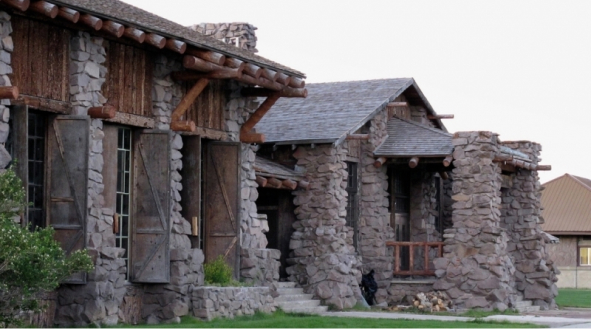- 1880s
Early settlers and employees are buried in Kite Hill cemetery. - 1903
The Park Engineer's office is designed by Hiram Chittenden, U.S. Army. - 1908
Architect Robert Reamer designs the Reamer House, exemplifying Prairie-style architecture.
Albright Visitor Center
Housed in the former bachelor officers' quarters in Fort Yellowstone, the Albright Visitor Center features many history exhibits: Native Americans, mountain men, early exploration, the Army days, and early National Park Service. There is also a wildlife exhibit upstairs. Visitor Center services include a backcounty office, visitor information, permits, and store.
- Location: In Fort Yellowstone at Mammoth Hot Springs.
- Season: Daily Year-Round
- Hours: 9am-5pm
- Phone: 307-344-2263
Fort Yellowstone
Fourteen years after Yellowstone was established, poor management required the Cavalry to be called in to manage the park's resources and visitors. Clapboard buildings were built in 1891, followed by additional buildings in 1897, and finally upgraded to stone buildings in 1909. Troops were there until 1918 and Fort Yellowstone has held historic significance ever since. Take a Ranger Led Walk through Fort Yellowstone to get the most out of your visit.
- Location: If you see a red roof in the Mammoth Hot Springs area, you've found Fort Yellowstone.
- Season: You can stroll through Fort Yellowstone any time of year.
Roosevelt Arch
Marking the north entrance to the park, the Roosevelt Arch was built in 1903. It marked the new railroad stop in Gardiner, allowing visitors to more easily visit the park. President Theodore Roosevelt placed the cornerstone to the arch, hence giving it the name.
- Location: At the north entrance to the park in Gardiner.
- Season: Open year-round.
Geological History
The most significant features in the Mammoth area are the Mammoth Hot Springs Terraces. Stroll along the boardwalk to read more about how these terraces were formed.





